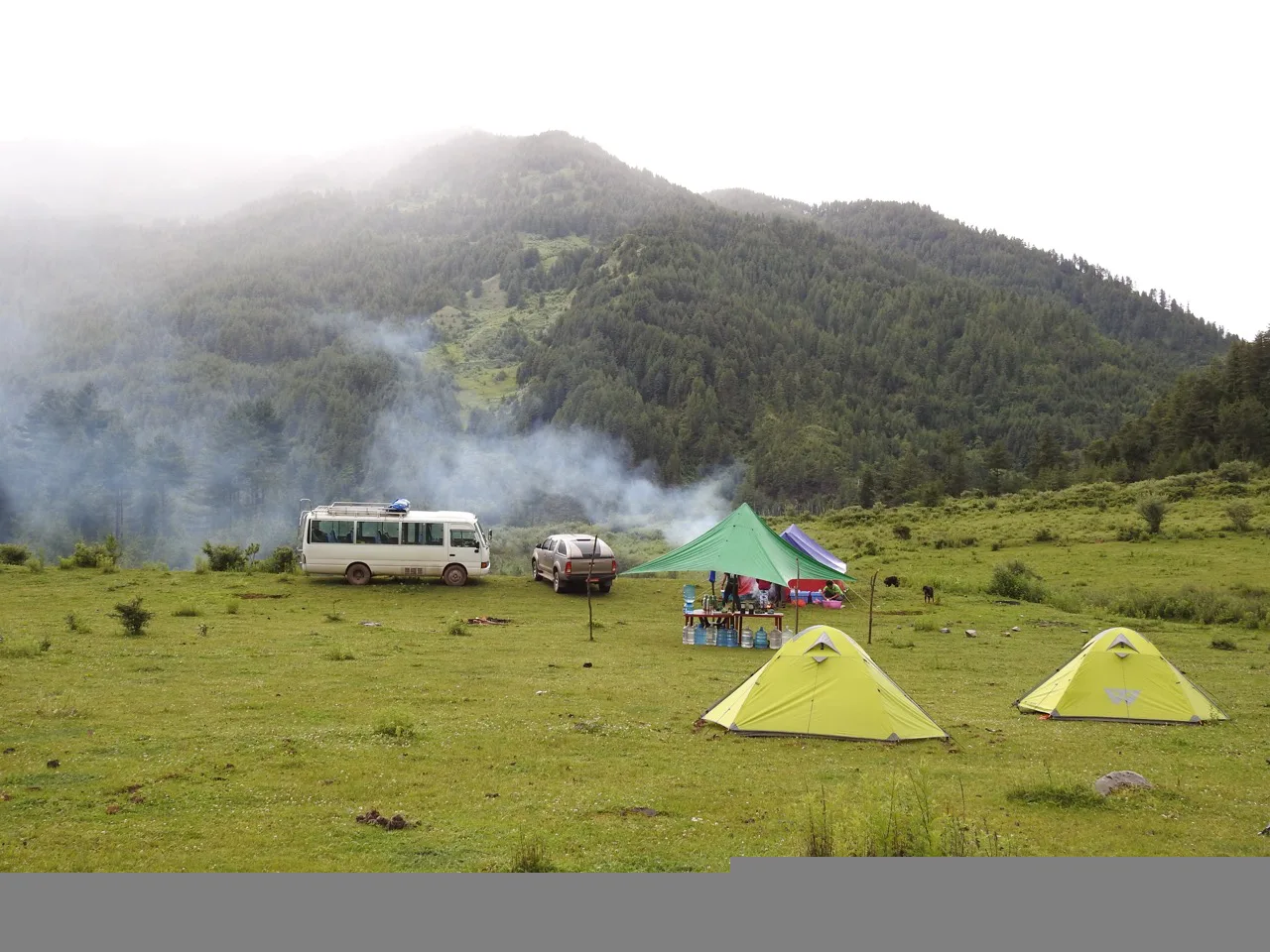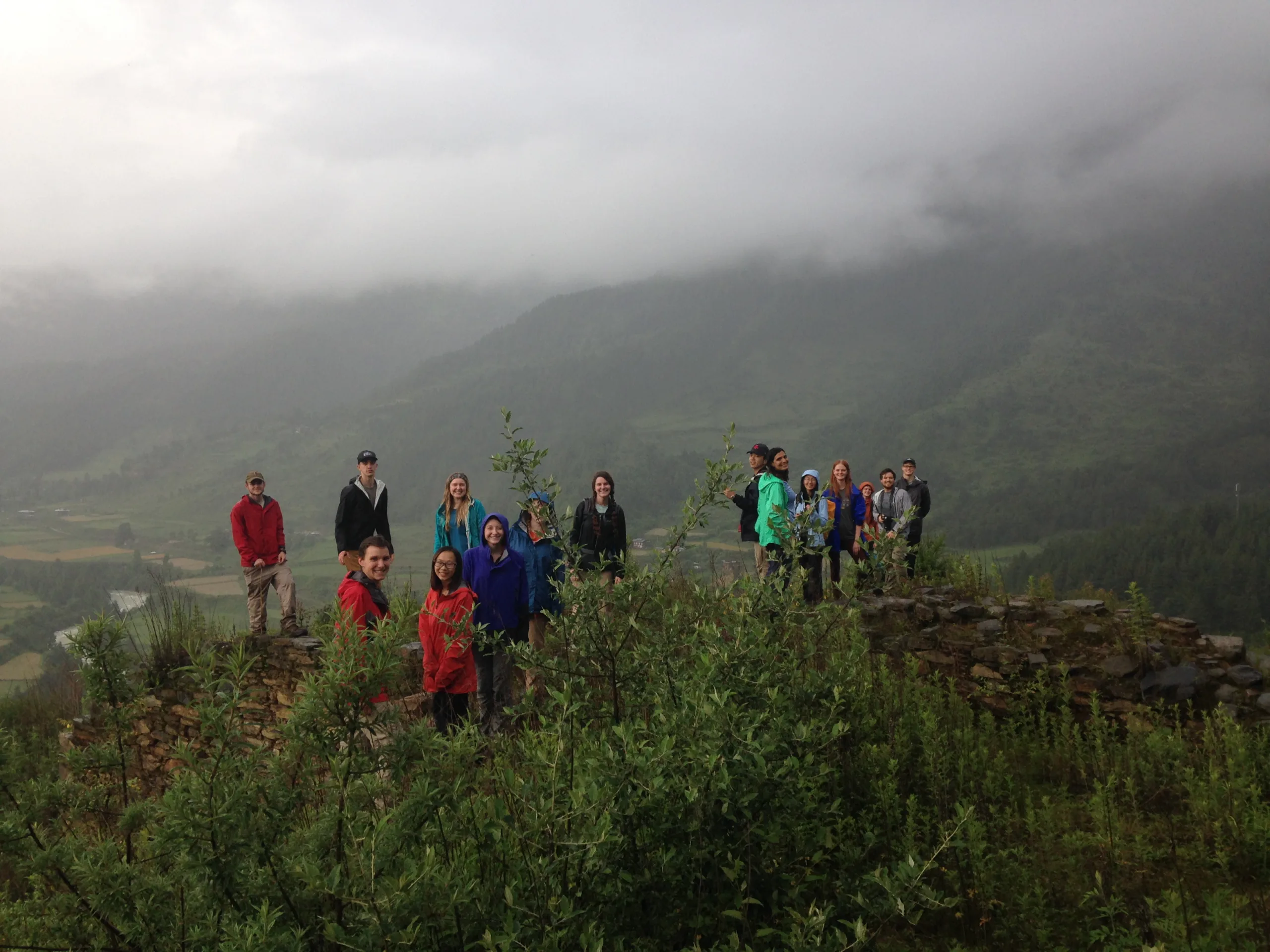
By: Christian Kiffner, PhD
Why Does This Landscape Look Like This?
This question—a theme in our summer course in Bhutan—encourages students to consider the ways in which rural development, community resource management, forest-based livelihoods, and environmental sustainability are interconnected.
I posed this question to our students while gazing out from our first campsite on our three-day trek along the Bumthang Trail. As they contemplated the scene, the students observed that the water rushing below our perch carved the valley before us. They questioned the green patch of grass rising through the dense forest on the opposite side of the river—had a fire destroyed the forest? Was it logged for timber? Was it terraced for agriculture? Without any evidence to support these possibilities, the students correctly deduced the area was Tsamdro—community-managed communal grazing lands.
In fact, the very terraces we were camping in had once been used for agriculture, but were now grazed (any ideas of how we could tell?).
 Photo by Casey Kohn
Photo by Casey Kohn
Adding to the complexity of the landscape, I pointed out to the students that we had already entered Wangchuck Centennial National Park—Bhutan’s newest national park. How do we make sense of being within a national park and the land use before our eyes (or even the village just out of view)? With one exception, Bhutan’s protected areas take on a new paradigm of conservation by recognizing the importance of people in efforts to conserve and protect areas. That is, throughout the Himalaya, people shaped landscape to look as it does today and people continue to play an important role in sustainably managing those landscapes and natural resources. Thus, people live within protected areas and are active participants in the managed use of those areas. The power of this message continued to be driven home as we spent the next two days hiking through sustainably managed agricultural fields and grazing lands, where rural livelihoods, resource management, and environmental sustainability overlap.

Photo by Lindsay Skog
Related Posts


Alumni Reflections: Stories of the Return to Kenya
